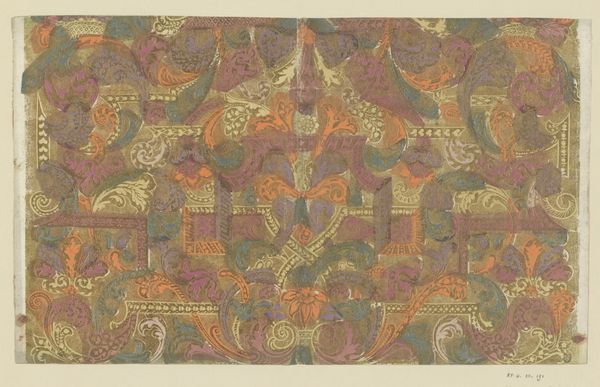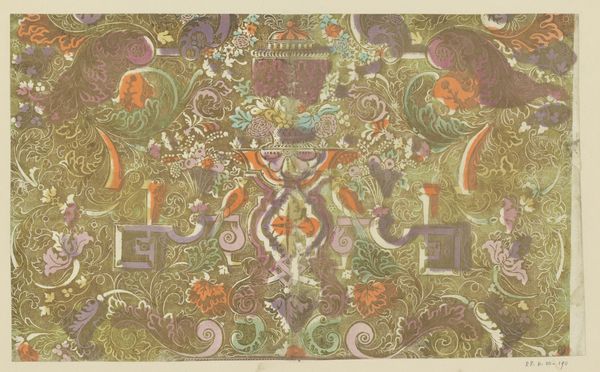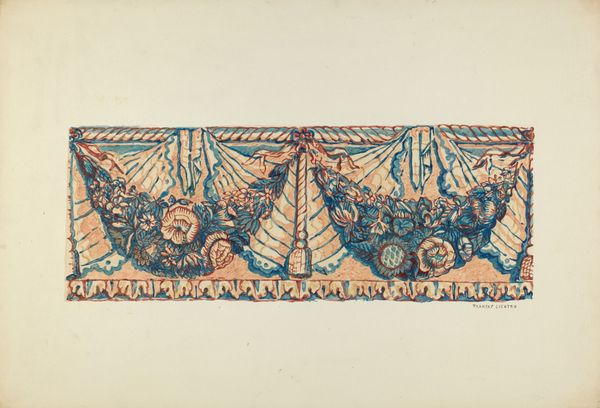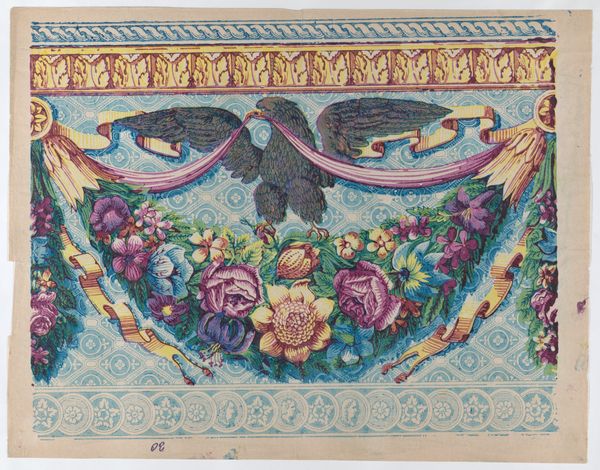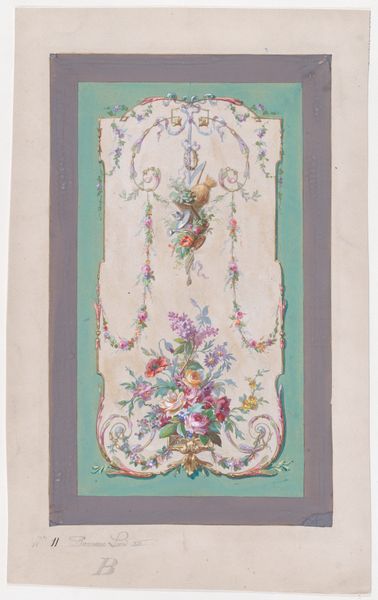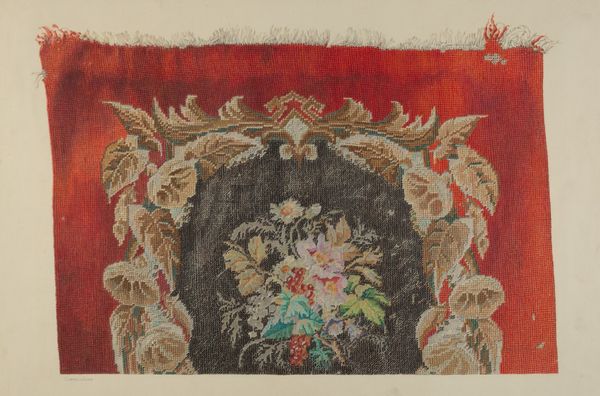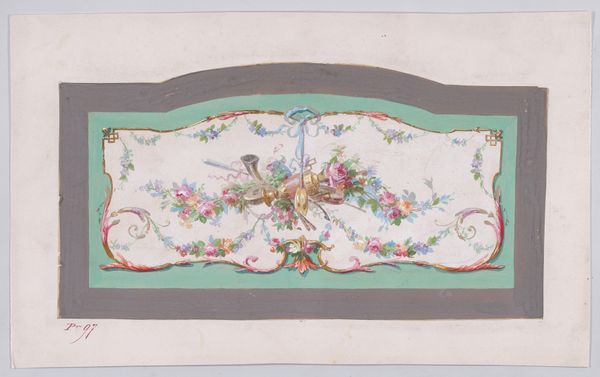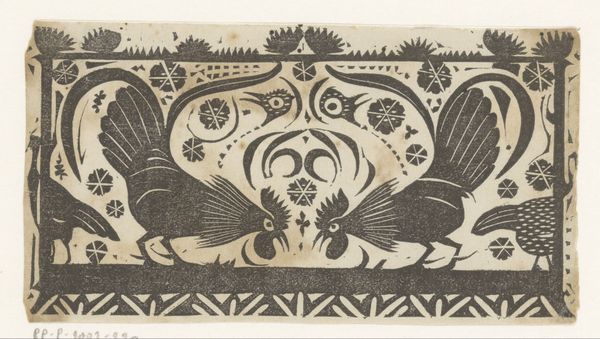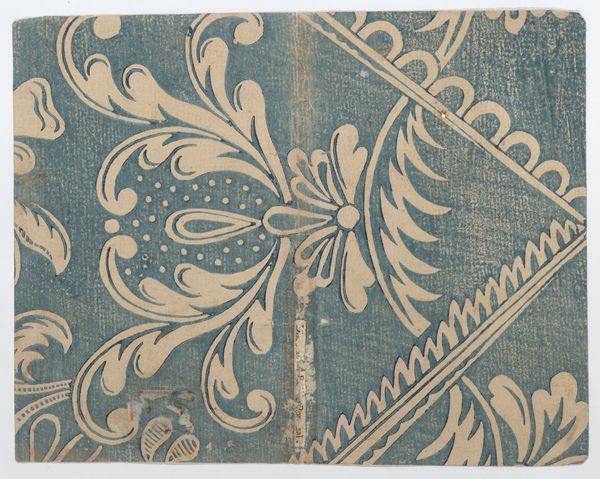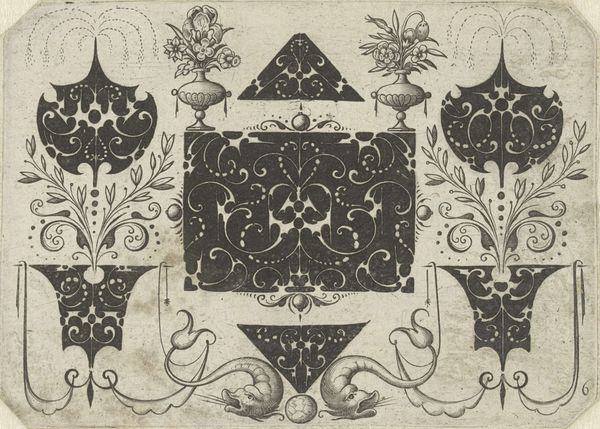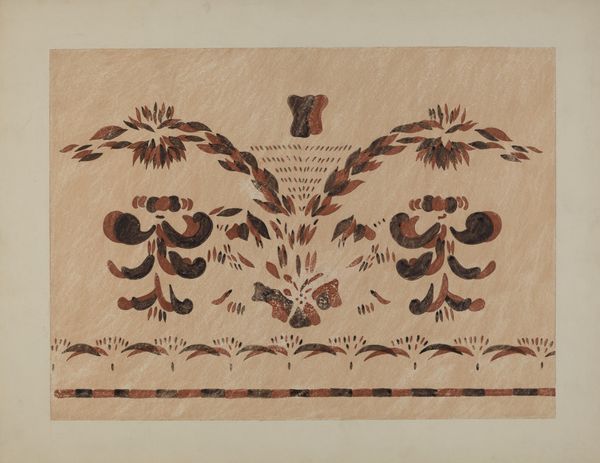
drawing, print, watercolor, pencil
#
drawing
#
water colours
# print
#
watercolor
#
coloured pencil
#
geometric
#
pencil
#
watercolor
Dimensions: 9-3/4 x 12-1/8 in
Copyright: Public Domain
Curator: Here we have "Design for a Painted Ceiling," an intriguing watercolor, pencil, and print work made sometime between 1800 and 1900, currently housed at the Metropolitan Museum of Art. What’s your initial take on it? Editor: Well, immediately, I’m struck by the incompleteness, almost a ghostly feel to the ornate framework against sections filled in with more vibrant blues and pinks. There’s an unresolved tension there, a beautiful push-and-pull. Curator: Absolutely. It’s a fascinating glimpse into the planning stages, revealing the labor involved in high-end design. Consider the cost and craft associated with a painted ceiling—it's not merely decoration; it's a statement of power, luxury, and social status enacted by wealthy patrons, but also teams of craftsmen, which complicates any reading focused solely on upper-class tastes. Editor: I see your point. It's impossible to ignore the power dynamics at play, who commissions, who creates. And this design feels almost deliberately opulent, signaling wealth and control, especially given the timeframe. Were these geometric designs and angelic forms also about asserting dominance and authority within particular social or political landscapes? It certainly feels patriarchal. Curator: Undeniably. And consider the materials themselves – watercolor, pencil, print – relatively accessible materials used to plan such an extravagant and permanent fixture. The juxtaposition of these modest materials used for the planning stage with the extravagant potential of the final product says much about artistic process and deferred social statement. Editor: That makes me think about labor further. Who would've prepared these materials? How were they sourced, and who was involved in those processes? The materials, the artists, the owners—all wrapped up in complex social and political narratives, hinting at the hands that contributed. I'm especially thinking about all those unseen hands... Curator: Precisely! Looking at "Design for a Painted Ceiling," we get so much more than simply the idea for a ceiling. It opens up questions about the hierarchy of art production and what gets valued in art historical narratives. Editor: It is about seeing beyond the finished, polished result and excavating the layers of material, social relations, labor, and meaning embedded within its very conception. Thanks for shedding light on this layered work! Curator: Thank you for joining me to view it. These forgotten, initial sketches have many stories to tell, far beyond any final creation.
Comments
No comments
Be the first to comment and join the conversation on the ultimate creative platform.

